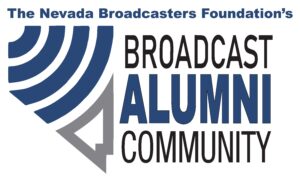Here are some of the regulatory developments of significance to broadcasters from the past two weeks, with links to where you can go to find more information as to how these actions may affect your operations. On our Broadcast Law Blog this week, we reminded broadcasters that special elections and state and local elections trigger… Continue Reading…
Special Election Dates Announced to Fill George Santos’ Congressional Seat – Remember Special Elections and State and Local Elections Trigger Political Obligations Too
Right now, most broadcasting stations and other media companies are focused on selling political advertising for the primaries for the 2024 elections and subsequent November election that will elect the President, the US Congress, and so many other officer holders in DC and elsewhere in the country. But broadcasters need to be aware of other… Continue Reading…
FCC Extends LPFM Filing Window Until December 15 and Extends Freeze on Minor Modifications to FM Translators to December 18, 2023
The FCC yesterday released a Public Notice extending for two days the now-open window for the filing of applications for new LPFM stations – applicants now have until 12:00 PM Eastern Time on December 15, 2023 to file their applications. See our articles here, here, and here for more information on the LPFM filing window. The very… Continue Reading…
This Week in Regulation for Broadcasters: December 4 to December 8, 2023
Here are some of the regulatory developments of significance to broadcasters from the past two weeks, with links to where you can go to find more information as to how these actions may affect your operations. Continue Reading…
Michigan Becomes the Fifth State to Require Disclosure of the Use of AI in Political Ads
Another state has joined the list of those that require clear disclosure of the use of artificial intelligence (“AI”) in political ads, joining others that have addressed concerns about deep fakes corrupting the political process. Michigan’s Governor Whitmer just signed a bill that adds Michigan to 4 other states (Texas, California, Washington, and Minnesota) that… Continue Reading…
This Week in Regulation for Broadcasters: November 20 to December 1, 2023
Here are some of the regulatory developments of significance to broadcasters from the past two weeks, with links to where you can go to find more information as to how these actions may affect your operations. On our Broadcast Law Blog, we wrote an article setting out many of the most significant regulatory dates for… Continue Reading…
Cost of Living Increases Announced for Music Royalties Paid by Webcasters to SoundExchange and by Noncommercial Broadcasters to SESAC and GMR
In Federal Register notices published this week, the Copyright Royalty Board announced cost-of-living increases for two sets of music royalties. Webcasters, including broadcasters streaming their signals on the web or through mobile apps, will be paying more to SoundExchange for the public performance of sound recordings. In addition, noncommercial broadcasters affiliated with educational institutions, but not affiliated with… Continue Reading…
December Regulatory Dates for Broadcasters – Biennial Ownership Reports, Annual EEO Public File Reports, LPFM Filing Window, LUC Political Windows for 2024 Election, and More
Even with the holidays upon us, regulation never stops. There are numerous regulatory dates in December to which broadcasters need to keep in mind. Furthermore, as the 2024 presidential campaign is already underway, there are political advertising deadlines to watch out for. Here are some of the upcoming deadlines: December 1 is the filing deadline… Continue Reading…
Giving Back to the Broadcast Industry on Giving Tuesday
For the last few years at this time of the year, we’ve departed from our usual coverage of legal and policy issues to talk about something else – broadcasters giving back. With Giving Tuesday upon us, we wanted to urge our readers to consider ways to give back to our industry. I guess it is… Continue Reading…
This Week in Regulation for Broadcasters: November 13 to November 17, 2023
Here are some of the regulatory developments of significance to broadcasters from the past week, with links to where you can go to find more information as to how these actions may affect your operations. Also, this week Congress averted a shutdown of the federal government by passing a continuing resolution to fund the government… Continue Reading…
This Week in Regulation for Broadcasters: November 6 to November 10, 2023
Here are some of the regulatory developments of significance to broadcasters from the past week, with links to where you can go to find more information as to how these actions may affect your operations. Looking ahead, as Congress still has not passed budget bills for the fiscal year that started on October 1, and… Continue Reading…
Meta to Require Labeling of Digitally Altered Political Ads (Including Those Generated By AI) – Looking at the Rules that Apply to Various Media Platforms Limiting Such Policies on Broadcast and Cable
Facebook parent Meta announced this week that it will require labeling on ads using artificial intelligence or other digital tools regarding elections and political and social issues. Earlier this week, we wrote about the issues that AI in political ads pose for media companies and about some of the governmental regulations that are being considered… Continue Reading…


